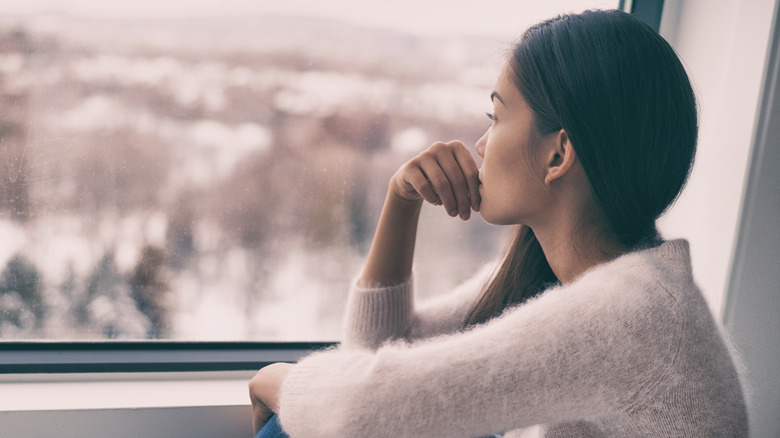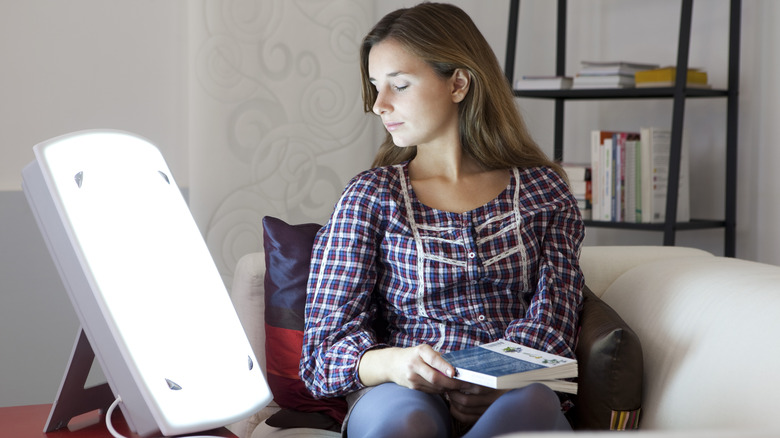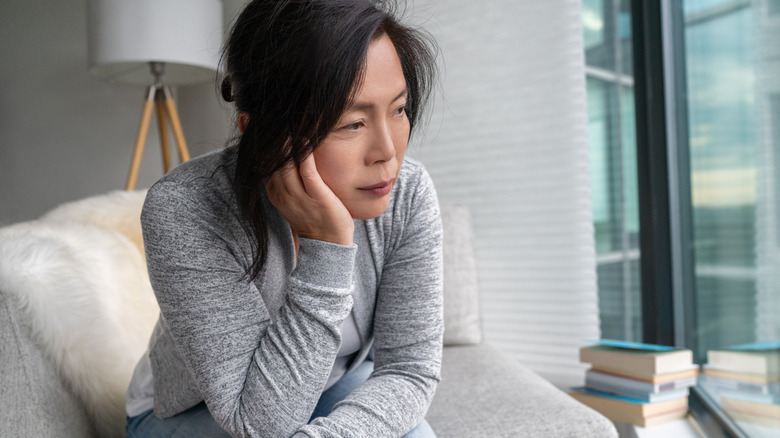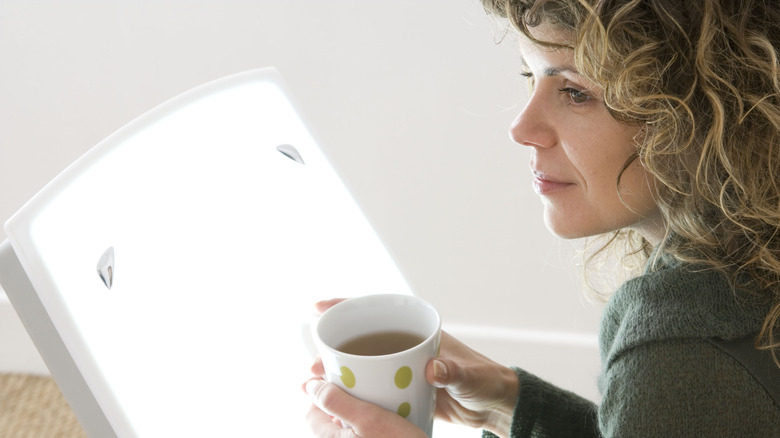How Effective Are 'Happy Lights' In Treating SAD? Here's What A Clinical Psychologist Has To Say
We may receive a commission on purchases made from links.
As the leaves become more vibrant in color and the weather colder, some people may not be excited for the return to cool autumn and winter months. For those with Seasonal Affective Disorder (SAD), slipping away from the summer months may lead to worsened symptoms of depression, according to the Mayo Clinic.
But those melancholy feelings can be supplemented with different treatments. Dr. Monica Vermani spoke exclusively to The List to share how certain habits and small changes can make living with SAD more manageable.
SAD can trigger depression as the days shorten, according to the National Institute of Mental Health. It is not just your mind that is affected by depression. Your body experiences a series of changes when you're depressed. General depression symptoms to be aware of include frequent crying or the inability to cry at all, irritability, loss of interest, and sleeping too much or not enough.
SAD ties these symptoms into the seasons, according to NIMH. For those strongly affected by the winter months, SAD can lead to sleeping and eating more than usual, gaining weight, and withdrawing from relationships. SAD can affect some in the warmer months, too, causing insomnia, poor appetite, and anxiety.
However, managing SAD symptoms is possible. For those dreading the oncoming cold months, Dr. Vermani, author of "A Deeper Wellness," has shared tips with us to keep major depression symptoms at bay.
Light therapy can help regulate moods and sleep patterns for those with SAD, according to expert
Fluctuation in your body's hormones is one of the most intense ways SAD disrupts your ability to maintain healthy habits during winter. According to Dr. Monica Vermani, melatonin and serotonin levels can change during this time of year for those with SAD. "Regulating melatonin and serotonin positively impacts our quality of sleep," she told The List in an exclusive interview. "And quality sleep allows us to feel rested and regulates our moods."
Dr. Vermani has worked as a clinical psychologist for over 25 years. A specialist in the fields of trauma, stress, and mood disorders, she wants to help others heal and grow through exercises proven to increase emotional regulation and mindfulness.
Although SAD symptoms can spike at certain times of the year, the condition is still serious and can require treatment. Light therapy is one inexpensive yet effective treatment for SAD, according to Dr. Vermani. Light boxes can be placed throughout your home to emulate the sun's glow during these darker months.
"Over the years, light boxes have become highly effective, and reasonably priced," Dr. Vermani said. And, best of all, according to the clinical psychologist, "Light boxes work."
How light boxes can treat SAD
Though light boxes can be effective, "the key to making them work is consistently using them," Dr. Monica Vermani told The List. The best time to use a light box is in the morning to set the tone for your day and fend off depression symptoms. "The goal is to use a light box as early in the morning as possible, 20 to 60 minutes every morning before 11:00 A.M.," she said. "This consistent, regular system of use will optimize the outcome of light therapy."
These light boxes work by helping your body regulate hormones naturally derived from exposure to sunlight. Those with SAD who get up and go to work before the sun has risen and get home by the time it has set likely are not getting the amount of light necessary to keep melatonin and serotonin levels high. That's where light boxes can come in and literally brighten your mood, according to Dr. Vermani.
"Seasonal affective light therapy boxes/happy lights positively impact the body's regulation of melatonin, a hormone that helps control our sleep and wake cycles. This also impacts serotonin levels, which help regulate symptoms of mood and anxiety by relaying healthy signals to our brains and managing our moods," she told The List.
How to properly use happy lights to control SAD symptoms
As with any treatment, these "happy lights" are most effective when used properly. In fact, "excessive use of a light box can make you feel hyper and over-energized," according to Dr. Monica Vermani. The ideal amount of time to keep your light box on is between 20 and 60 minutes. And, just like caffeine, "happy lights" can keep you up at night if used too late in the day. "[T]iming is everything!" Dr. Vermani said. "Using a light box too late in the day will disrupt your sleep."
Light boxes offer a simple source of joy to make the melancholy and loneliness of the colder months more manageable. "Used wisely, consistently and well, a light box can help lift mood, and energy levels, and allow you to feel refreshed and alert ... even on the darkest of days," Dr. Vermani said.



